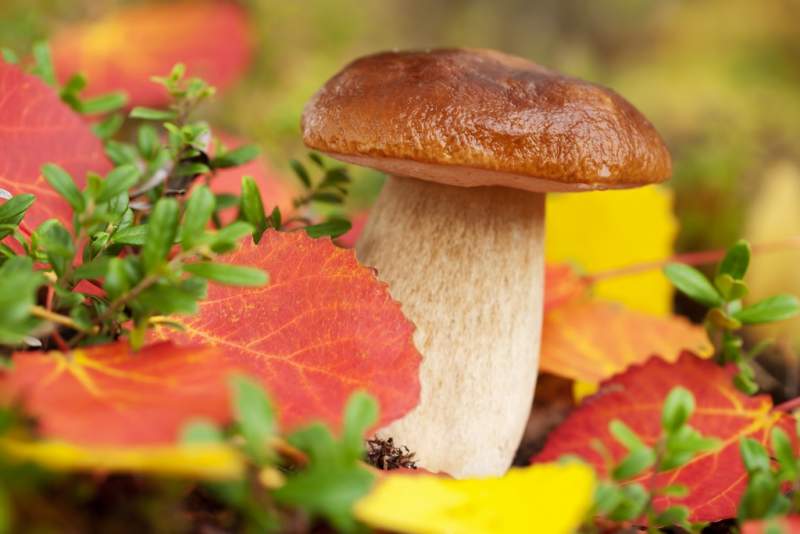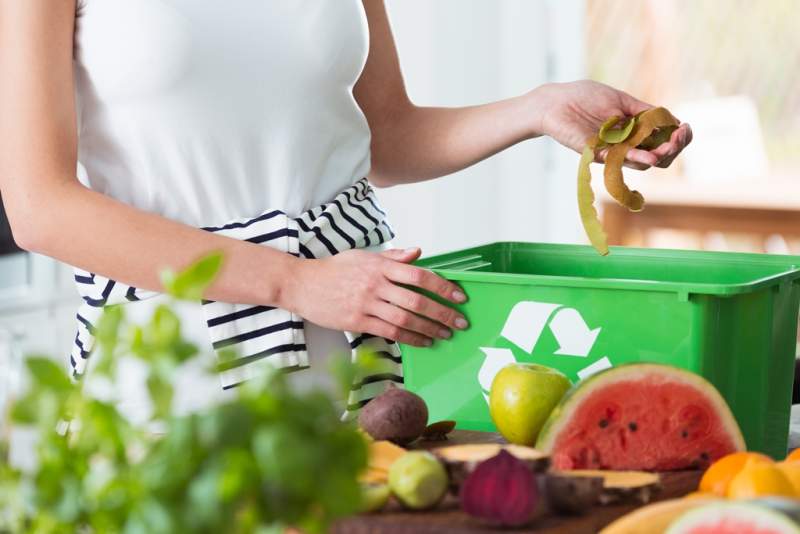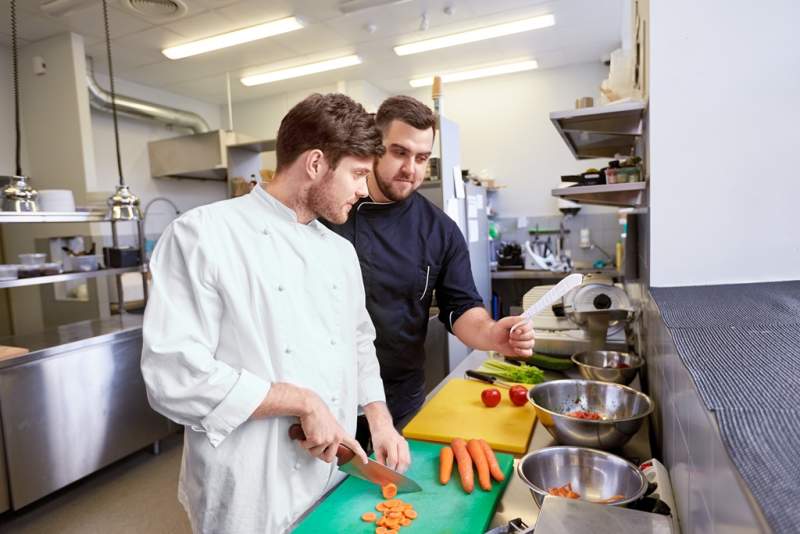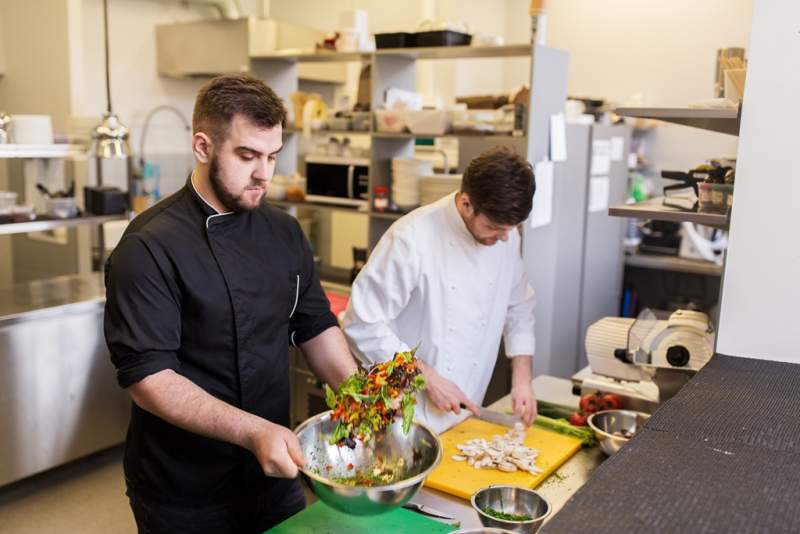It’s a sad fact that restaurants contribute to the millions of pounds of food that are thrown away each year. The most worrisome part of this is that a large percentage of this food waste is still edible — which is why many restaurants are turning to root to stem cooking.
The concept of root to stem cooking is not new. Many cultures value using the entire plant as an economical and sustainable way to add flavor to dishes. But far from being viewed as old-fashioned, root to stem cooking has recently gained popularity among chefs and has been deemed as one of the hottest food trends to hit the restaurant industry in 2018.
What is Root to Stem Cooking?
 In the same way that nose to tail cooking emphasizes using as much of the animal as possible, so too does root to stem cooking find value in the entire plant, effectively minimizing food waste. This means the skins, roots, rinds, seeds and leaves are all seen as fair game when it comes to preparing dishes.
In the same way that nose to tail cooking emphasizes using as much of the animal as possible, so too does root to stem cooking find value in the entire plant, effectively minimizing food waste. This means the skins, roots, rinds, seeds and leaves are all seen as fair game when it comes to preparing dishes.
How Can Your Business Benefit from Root to Stem Cooking?
 Farm-to-table cooking is fast becoming a popular practice throughout the industry to create a stable and sustainable relationship between the agriculture and hospitality industries. But a part of this philosophy means sourcing local produce that comes with a higher price tag than standard wholesale produce.
Farm-to-table cooking is fast becoming a popular practice throughout the industry to create a stable and sustainable relationship between the agriculture and hospitality industries. But a part of this philosophy means sourcing local produce that comes with a higher price tag than standard wholesale produce.
The benefit of the root to stem movement is that the pounds of discarded food waste that result from preparing dishes by conventional methods can now be reused to enhance dishes or become superb dishes on their own — which translates as money saved for your business.
In addition to the financial benefits, your business will also reduce its environmental footprint by eliminating a significant part of its restaurant waste, as well as contributing to a culture of sustainability.
Root to stem cooking also allows your kitchen to develop more creative dishes, making your menu more appealing to customers in the highly competitive hospitality industry.
How Your Restaurant Can Use Root to Stem Cooking in the Kitchen
 Skin and Rinds
Skin and Rinds
The skins and rinds of fruits and vegetables are often the first part of the plant to get thrown in the trash. But these parts are often packed with flavor or color that can transform your dishes into masterpieces.
Root vegetable skins may not look pretty, but they make a great addition to stock and soups to boost flavor while colorful fruit skins often still contain many of the essential oils that give the fruit their flavor. Try dehydrating apple and pear skins for a crispy garnish, or pickling watermelon or lemon rinds for a new flavor profile.
Seeds
Seeds are usually thrown out because of their unpalatable texture and perceived lack of flavor. But with some simple preparation techniques, you can add new and interesting textures to your dishes.
Seeds can be roasted whole to be sprinkled over salads for added crunch or pulverized into powder to be added to marinades and rubs as a spice.
Stems and Stalks
Stems and stalks are commonly tossed out because they can sometimes have an unpleasant texture, but these parts of the plant usually contain the same flavor as the rest of it and are a great way to boost the flavor of your dishes.
Soft herb stems can be added fresh to salads or placed as garnishes or used to flavor stocks. Woody-stemmed herbs are great for stocks but can be unpleasant to eat raw. Vegetable stalks such as broccoli or the stems from leafy greens make delicious purees.
Leaves
Using certain vegetable leaves is nothing new, but the root to vegetable philosophy encourages using alternative or overlooked fruit and vegetable leaves in your recipes.
Celery leaves are great for adding sweetness to salad, while carrot tops make a fantastic pesto. Many vegetable leaves can be bitter, so it is important to experiment with your recipes to find a good balance of flavors.
Flowers
Fruit and vegetable flowers may not have a tremendous amount of flavor, but the range of colors they offer makes them perfect garnishes and beautiful additions to salads. Larger flowers can also be stuffed with fillings or pureed into sauces.
How to Get Started
 Talk with Your Suppliers
Talk with Your Suppliers
Many suppliers prepare produce to make them more aesthetically pleasing to the buyer. This means that roots, leaves, fronds and stems are often discarded before they even make it to your kitchen. If you can’t get to the farmers market to select the produce yourself, speak with your suppliers and make product specifications when ordering your produce that include keeping the whole plant intact. This allows you more control over what parts of the plant you use in your dishes.
Explore New Products
Establishing a good rapport with your suppliers also opens doors to new and exciting products. Farmers often have a lot of experience cooking with unusual produce, and they may also have tips on which new products are available that can be used in their entirety.
Find the Balance Between Value and Labor
While using the entire plant is an overall financially sound idea, fruit and vegetable scraps often need additional preparation techniques to make them palatable to customers. Simple preparations such as using leaves in salads are quick and easy, but more intensive techniques such as creating flavored powders and elaborate garnishes can be time-consuming and labor-intensive to the point where it becomes more work than it is worth.
Plan Menus Thoughtfully
Once you commit to root to stem cooking in your restaurant, you need to make sure the chefs plan the menus around using the whole plant. Some parts of the plant spoil faster than other parts, so they will need to be prepared in a way that preserves them. This means planning ahead and being flexible about preparation techniques.
Do Your Research
Ideally, root to stem recipes would use the whole of the plant, but there are some parts of some plants that are inedible or even dangerous to consume, such as tomato leaves or potato shoots. Doing a little research can help you to understand which parts of the plant to use and which must be discarded to avoid making customers ill.
Final Thoughts
Root to stem cooking is a financially-savvy, environmentally-conscious way to avoid food waste in your restaurant, but it is not the only way you can help reduce the impact food waste has on your business and the world in general.
Make root to stem cooking a part of your restaurant kitchen to find new and inventive ways to make your dishes creative and profitable.

 Skin and Rinds
Skin and Rinds Talk with Your Suppliers
Talk with Your Suppliers